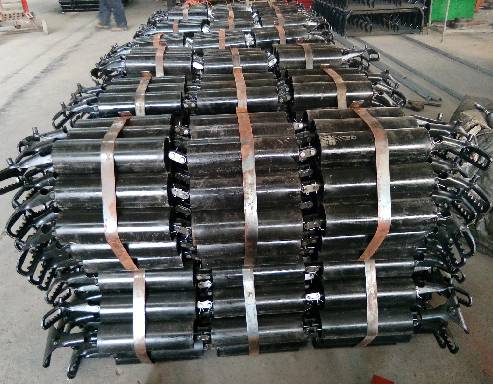 Afrikaans
Afrikaans  Albanian
Albanian  Amharic
Amharic  Arabic
Arabic  Armenian
Armenian  Azerbaijani
Azerbaijani  Basque
Basque  Belarusian
Belarusian  Bengali
Bengali  Bosnian
Bosnian  Bulgarian
Bulgarian  Catalan
Catalan  Cebuano
Cebuano  Corsican
Corsican  Croatian
Croatian  Czech
Czech  Danish
Danish  Dutch
Dutch  English
English  Esperanto
Esperanto  Estonian
Estonian  Finnish
Finnish  French
French  Frisian
Frisian  Galician
Galician  Georgian
Georgian  German
German  Greek
Greek  Gujarati
Gujarati  Haitian Creole
Haitian Creole  hausa
hausa  hawaiian
hawaiian  Hebrew
Hebrew  Hindi
Hindi  Miao
Miao  Hungarian
Hungarian  Icelandic
Icelandic  igbo
igbo  Indonesian
Indonesian  irish
irish  Italian
Italian  Japanese
Japanese  Javanese
Javanese  Kannada
Kannada  kazakh
kazakh  Khmer
Khmer  Rwandese
Rwandese  Korean
Korean  Kurdish
Kurdish  Kyrgyz
Kyrgyz  Lao
Lao  Latin
Latin  Latvian
Latvian  Lithuanian
Lithuanian  Luxembourgish
Luxembourgish  Macedonian
Macedonian  Malgashi
Malgashi  Malay
Malay  Malayalam
Malayalam  Maltese
Maltese  Maori
Maori  Marathi
Marathi  Mongolian
Mongolian  Myanmar
Myanmar  Nepali
Nepali  Norwegian
Norwegian  Norwegian
Norwegian  Occitan
Occitan  Pashto
Pashto  Persian
Persian  Polish
Polish  Portuguese
Portuguese  Punjabi
Punjabi  Romanian
Romanian  Russian
Russian  Samoan
Samoan  Scottish Gaelic
Scottish Gaelic  Serbian
Serbian  Sesotho
Sesotho  Shona
Shona  Sindhi
Sindhi  Sinhala
Sinhala  Slovak
Slovak  Slovenian
Slovenian  Somali
Somali  Spanish
Spanish  Sundanese
Sundanese  Swahili
Swahili  Swedish
Swedish  Tagalog
Tagalog  Tajik
Tajik  Tamil
Tamil  Tatar
Tatar  Telugu
Telugu  Thai
Thai  Turkish
Turkish  Turkmen
Turkmen  Ukrainian
Ukrainian  Urdu
Urdu  Uighur
Uighur  Uzbek
Uzbek  Vietnamese
Vietnamese  Welsh
Welsh  Bantu
Bantu  Yiddish
Yiddish  Yoruba
Yoruba  Zulu
Zulu heinä . 10, 2024 20:26
Back to list
Types of Rollers Used in Belt Conveyor Systems for Efficient Material Handling.
Belt conveyors are essential for transporting materials in various industries, such as mining, food processing, and manufacturing. One critical component of a belt conveyor system is the rollers. Different roller types are used depending on the specific requirements of the conveyor system.
The most common type of roller used in belt conveyors is the troughing idler. These rollers are designed to support the belt and prevent it from sagging in the middle. Troughing idlers are typically placed on the top side of the conveyor belt and are angled to create a trough shape, which helps to keep the material on the belt and prevent spillage.
Another type of roller used in belt conveyors is the impact idler. These rollers are designed to absorb the impact of heavy loads as they are dropped onto the conveyor belt. Impact idlers are usually placed at the loading point of the conveyor to cushion the impact and protect the belt from damage.
Training idlers are another important type of roller used in belt conveyors

belt conveyor roller types. These rollers are designed to keep the belt centered on the conveyor and prevent it from wandering off track. Training idlers are typically placed on the return side of the conveyor belt and are adjustable to ensure proper alignment. In addition to these common roller types, there are also various specialty rollers that can be used in belt conveyors to meet specific needs. For example, spiral idlers are used to help clean the belt by scraping off excess material, while self-aligning idlers are used to automatically adjust the belt alignment as it moves along the conveyor. It is important to choose the right roller type for a belt conveyor system to ensure smooth and efficient operation. Factors to consider when selecting rollers include the material being transported, the weight of the load, the speed of the conveyor, and the environment in which the conveyor is operating. In conclusion, belt conveyor rollers play a critical role in the functionality and performance of a conveyor system. There are several types of rollers available, each with unique features and advantages. By selecting the right roller type for a specific application, operators can ensure the smooth and reliable operation of their belt conveyor system.

belt conveyor roller types. These rollers are designed to keep the belt centered on the conveyor and prevent it from wandering off track. Training idlers are typically placed on the return side of the conveyor belt and are adjustable to ensure proper alignment. In addition to these common roller types, there are also various specialty rollers that can be used in belt conveyors to meet specific needs. For example, spiral idlers are used to help clean the belt by scraping off excess material, while self-aligning idlers are used to automatically adjust the belt alignment as it moves along the conveyor. It is important to choose the right roller type for a belt conveyor system to ensure smooth and efficient operation. Factors to consider when selecting rollers include the material being transported, the weight of the load, the speed of the conveyor, and the environment in which the conveyor is operating. In conclusion, belt conveyor rollers play a critical role in the functionality and performance of a conveyor system. There are several types of rollers available, each with unique features and advantages. By selecting the right roller type for a specific application, operators can ensure the smooth and reliable operation of their belt conveyor system.
Latest news
-
Revolutionizing Conveyor Reliability with Advanced Rubber Lagging PulleysNewsJul.22,2025
-
Powering Precision and Durability with Expert Manufacturers of Conveyor ComponentsNewsJul.22,2025
-
Optimizing Conveyor Systems with Advanced Conveyor AccessoriesNewsJul.22,2025
-
Maximize Conveyor Efficiency with Quality Conveyor Idler PulleysNewsJul.22,2025
-
Future-Proof Your Conveyor System with High-Performance Polyurethane RollerNewsJul.22,2025
-
Driving Efficiency Forward with Quality Idlers and RollersNewsJul.22,2025
OUR PRODUCTS





























